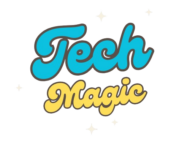
This company is no stranger to breaking barriers in technology, from electric vehicles to self-driving cars. But the company’s latest venture might just be its boldest yet: a humanoid robot called the Tesla Bot (or Optimus). This robot is designed to handle tasks that range from the mundane to the complex, and while it may sound like something out of a science fiction novel, it’s quickly becoming a reality. But what exactly is the Tesla Bot, and how could it change our future?
What is the Tesla Bot?
The Bot is a humanoid robot designed to assist humans with repetitive, physically demanding, or dangerous tasks. Standing 5’8” tall and weighing 125 pounds, it has a human-like form with arms and legs capable of various movements. Equipped with Tesla’s advanced AI, it can perceive and interact with its environment like Tesla’s self-driving cars do on the road.
Although the Tesla Bot is still in development, the idea behind it is clear: to build a robot that can help with everything from helping workers on factory floors to assisting with tasks in the home, like carrying groceries or doing simple chores. It’s a move toward automation in areas where humans often face repetitive or physically taxing work.
Why is Tesla Making a Robot?
The ultimate goal is to create robots that can perform tasks in a wide range of environments—whether that’s in a factory, at home, or in areas where human presence is limited or dangerous. By reducing the need for humans to perform manual labor, the Tesla Bot could also open up opportunities for new kinds of jobs and industries that we may not even have imagined yet.
How Does the Bot Work?
At the core of the Tesla Bot is the same AI that powers Tesla’s self-driving cars. This AI enables the robot to understand its surroundings, make decisions, and learn as it goes. Equipped with Tesla’s cameras and sensors, the bot can recognize obstacles, avoid hazards, and even navigate complex environments, much like a human would.
Its humanoid form makes it capable of a wide range of movements—from walking to lifting objects and performing more delicate tasks like handling tools or pressing buttons. The Bot is also designed to learn from experience, so the more it works, the smarter it becomes, just like Tesla’s cars improve over time with each new mile driven.
What Are the Challenges?
Like any new technology, the Tesla Bot faces some significant hurdles. For one, building a robot that can function in real-world environments is no easy feat. From walking without stumbling to understanding the nuances of everyday tasks, creating a robot that can perform a variety of jobs requires cutting-edge robotics, AI, and sensor technology. Tesla is up for the challenge, but it will take time to perfect the technology.
There are also societal and ethical considerations to think about. While the Tesla Bot could free humans from menial work, there are concerns about how it might impact employment. Could robots like the Tesla Bot replace jobs? If so, what will happen to workers whose roles are taken over by machines? These are important questions that Tesla—and society as a whole—will need to address.
Additionally, with any AI-driven device, security and privacy will be a major concern. How will Tesla ensure that its robot is safe to use and secure from hacking or misuse? These are issues that need to be carefully managed as the technology evolves.
What’s Next for the Tesla Bot?
Despite these challenges, the future of humanoid robots like the Tesla Bot is incredibly exciting. As Tesla continues to develop the Bot, we may soon see it in a variety of settings, from factories to homes. In the future, robots like the Tesla Bot could assist with everything from manual labor to caregiving, offering a helping hand when it’s needed most.
While we’re still a few years away from widespread adoption, the Tesla Bot represents a significant step forward in the field of robotics. It’s a glimpse into a future where robots and humans work together to make life more efficient and enjoyable.
Conclusion
The Tesla Bot is not just a robotics innovation—it’s a glimpse into our future. With its AI design and humanoid form, it could assist with everyday tasks, highlighting the incredible advancements in technology. Despite existing obstacles, it may one day transform our daily lives, changing how we work, live, and interact with the world.
The question isn’t if humanoid robots will become a part of our future, but when—and the Tesla Bot might just be the first step toward that reality.
it go time
